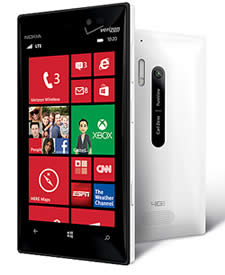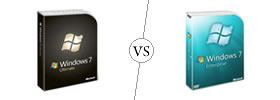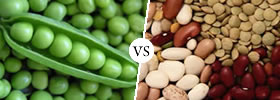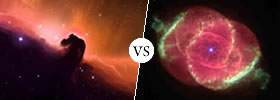Difference between Nokia Lumia 928 and LG Optimus G
Key Difference: Nokia has recently announced a new phone to its line-up; the Lumia 928. The phone comes with a 4.5-inch AMOLED capacitive screen with broad back bezel. The phone is quite bulky and heavy, compared to other newer smartphones that are focusing on getting thinner and lighter. The LG Optimus G features a 4.7 inch screen and runs on Android 4.0 (Ice Cream Sandwich). In terms of hardware, it has a Qualcomm Snapdragon S4 Pro APQ8064, 1.5 GHz quad-core Qualcomm Krait with 2 GB RAM.
 Nokia has recently announced a new phone to its line-up; the Lumia 928. This phone is considered as the flagship phone for Verizon (a US telecommunications company) but it is also available in an unlocked version. In terms of hardware, the phone is very similar to Nokia’s flagship 920 but has added on extra features and tweaks that can go either way. Although, the phone has been modified, there are no revisions to the Windows Phone 8.
Nokia has recently announced a new phone to its line-up; the Lumia 928. This phone is considered as the flagship phone for Verizon (a US telecommunications company) but it is also available in an unlocked version. In terms of hardware, the phone is very similar to Nokia’s flagship 920 but has added on extra features and tweaks that can go either way. Although, the phone has been modified, there are no revisions to the Windows Phone 8.
The Nokia Lumia 928 does not share the physical characteristics of the 920. It is in a bar from that has a slight bulge on the back that makes the phone comfortable to hold. Another small curve can be found on the bottom on which speaker grille is strategically placed that keeps volume from getting muffled when placed flat on the back. The phone comes with a 4.5-inch AMOLED capacitive screen with broad back bezel. The phone is quite bulky and heavy, compared to other newer smartphones that are focusing on getting thinner and lighter.
The Nokia phones are known for the bright interactive colors, which are no longer an option in this model. The phone is available only in two options: matte black and glossy white. This is believed to be because it is a Verizon exclusive phone. The phone comes with the basic structure of the Nokia phones with the volume rocker, power button and a dedicated camera key on the right edge. The power button is very similar to volume rocker only slightly smaller, making it difficult to find it without looking. The volume rocker is also a little to access and hit during mid-call. The left side of the device is bare, while the top hosts a center-mounted Micro USB port, a pull-out SIM tray and a 3.5mm jack. The back stands out with a bigger Xenon flash and the camera with Carl Zeiss lens.
The phone comes with a 4.5-inch AMOLED capacitive touchscreen with ~334 ppi pixel density and boasts excellent sunlight readability. The AMOLED screen is better for side viewing angles and sunlight visibility. The phone does have excellent resolution and the images are sharp, crisp and clear. The screen can also be configured for ‘high touch sensitivity’ known as ‘glove mode’. The phone also has amazing speakers but almost all reviewers said that when talking on the phone, the voice on the other end sounded hollow and unrealistic. The loud speaker also lacks bass and depth. However, the noise cancellation on the phone works exceptionally.
The phone is powered by 1.5 GHz Krait Dual-core Qualcomm MSM8960 Snapdragon processor, making it fast. The phone does not lag or even slow down. As it is a windows phone obviously it is powered by the Windows Phone 8 OS. The Android vs. Windows Phone debate is always the same. Though, the OS is great, Android does have more apps to offer and is also more customizable. The phones offers 1 GB RAM and has 32 GB internal memory. For users looking to add more than 32GB of data will run out of luck, as it does not offer adding extra memory.
The device houses an 8.7 MP PureView rear camera and a 1.2 MP front camera. The rear camera comes with the Carl Zeiss optics for sharper images. It also comes with the typical autofocus, image stabilization, flash etc. However, Nokia does proud itself for its low-light image technology and rightfully so. The low-light images are quite sharp and does not blur. In addition to that, the company also offers xenon flash that is bright and powerful. The xenon flash can only be used as flash and cannot be left lit, so the company has also added a secondary flash for videos and flashlight purposes. The camera does have slow shutter speed, which requires people to hold the camera still for long periods of time to avoid motion blur.
The device houses a non-removable Li-Ion 2000 mAh battery (BV 4-NW) that boasts good power. The Verge could run the battery for approximately 27 hours, while Tech Hive got only 6.5 hours out of it. The power of the battery depends on running applications, usage and many other different factors. In all, the phone is okay but does not come close to its 920 cousin.
 The LG Optimus G features a 4.7 inch screen and runs on Android 4.0 (Ice Cream Sandwich). In terms of hardware, it has a Qualcomm Snapdragon S4 Pro APQ8064, 1.5 GHz quad-core Qualcomm Krait with 2 GB RAM. It has a 13 MP or an 8MP primary camera, which is dependent on the market. It has a 1.3 MP secondary front camera. It is available with a storage capacity of 32 GB. It will have 4G and NFC capabilities.
The LG Optimus G features a 4.7 inch screen and runs on Android 4.0 (Ice Cream Sandwich). In terms of hardware, it has a Qualcomm Snapdragon S4 Pro APQ8064, 1.5 GHz quad-core Qualcomm Krait with 2 GB RAM. It has a 13 MP or an 8MP primary camera, which is dependent on the market. It has a 1.3 MP secondary front camera. It is available with a storage capacity of 32 GB. It will have 4G and NFC capabilities.
The phone can be identified by the glittery backside which makes the phone appear trendy. However, the back panel is not removable, which may be a downside for some, as this means that the battery will not changeable. The phone has also been criticized for being a little on the heavier side.
The LG Optimus G features Smart Screen that keeps the screen on if the phone detects the user's eyes looking at it. It also allows users to choose the phone's default font and font size, change how long the capacitive keys backlight stays on, and customize the events that trigger the notification light to flash. The phone also features QSlide apps which include a web browser, Memo pad, Calendar, Calculator and a Video player. These allow the users to run two of these QSlide apps simultaneously with a slider allows user to focus on one of them.
The information for the detailed table about the two phones has been taken from the Nokia website, theverge.com, engadget.com, digitaltrends.com and GSMArena.com.
|
|
Nokia Lumia 928 |
LG Optimus G |
|
Launch Date |
May 2013 |
November 2012 |
|
Company |
Nokia |
LG Electronics |
|
Size |
133 x 68.9 x 10.1 mm |
131.9 x 68.9 x 8.5 mm (5.19 x 2.71 x 0.33 in) |
|
Display |
4.5-inch AMOLED capacitive touchscreen |
True HD-IPS + LCD capacitive touchscreen, 16M colors |
|
Screen |
768 x 1280 pixels (~334 ppi pixel density), 16 million colors |
768 x 1280 pixels, 4.7 inches (~318 ppi pixel density) |
|
Protection |
Corning Gorilla Glass 2 |
Corning Gorilla Glass |
|
Weight |
162 grams |
145g (5.11 oz) |
|
2G Network |
GSM 850 / 900 / 1800 / 1900 CDMA 800 / 1900 |
GSM 850 / 900 / 1800 / 1900 |
|
3G Network |
HSDPA 850 / 900 / 1700 / 1900 / 2100 CDMA2000 1xEV-DO |
HSDPA 900 / 2100 |
|
4G Network |
LTE 700 MHz Class 13 / 1700 / 2100 |
LTE Cat. 3 CSFB 700/1700 |
|
GUI |
Windows Phone UI |
LG Optimus UI v3.0 |
|
CPU speed |
1.5 GHz Krait Dual-core |
Quad-core 1.5 GHz Krait |
|
GPU |
Adreno 225 |
Adreno 320 |
|
OS |
Windows Phone 8 |
Android OS, v4.0.4 (Ice Cream Sandwich), upgradable to v4.1.2 (Jelly Bean) |
|
Chipset |
Qualcomm MSM8960 Snapdragon |
Qualcomm MDM9615/APQ8064 |
|
RAM |
1 GB |
2 GB RAM |
|
SIM Size |
microSIM |
Micro-SIM |
|
Internal Memory |
32 GB |
32 GB |
|
Expandable Memory |
N/A |
None |
|
Sensors |
Ambient light sensor, Accelerometer, Gyroscope, Proximity sensor, Magnetometer |
Accelerometer, gyro, proximity, compass |
|
Connectivity |
NFC, Wi-Fi Channel bonding,2G, 3G, 4G, Wi-Fi, USB and Bluetooth |
Network Bluetooth Version Mobile Hotspot Wi-Fi Connectivity GPS AT&T 4G LTE Network 4.0+LE Share a 4G data connection with other compatible wireless devices 802.11b/g/n S-GPS For Enhanced Location Accuracy |
|
Data |
GPRS, EDGE, WLAN, Bluetooth, Wi-Fi, NFC, USB. |
WiFi, NFC, GPRS, EDGE, LTE, USB |
|
Speed |
EV-DO Rev. A, up to 3.1 Mbps; HSDPA, 42.2 Mbps; HSUPA, 5.76 Mbps; LTE, Cat3, 50 Mbps UL, 100 Mbps DL |
HSDPA, HSUPA, LTE |
|
WLAN |
WLAN IEEE 802.11 a/b/g/n |
Wi-Fi 802.11 a/b/g/n, dual-band, Wi-Fi Direct, DLNA, Wi-Fi hotspot |
|
Bluetooth |
Bluetooth v3.0 Object Push profile (OPP) 1.1, Hands-free profile (HFP) 1.5, Advanced Audio Distribution Profile (A2DP) 1.2, Audio/Video Remote Control Profile (AVRCP) 1.4, Phone Book Access Profile (PBAP) 1.1 |
Bluetooth v4.0 with A2DP |
|
USB |
microUSB 2.0 |
microUSB v2.0 (MHL), USB Host |
|
Primary Camera |
8.7 MP PureView 3264 x 2448 Pixels |
13 MP/8 MP (market dependent), autofocus, LED flash (depending on the market) |
|
Secondary Camera |
1.2 MP, 720p@30fps |
1.3 MP |
|
Video |
1080p@30fps, video stabilization, stereo sound rec. |
1080p@30fps, LED video light |
|
Camera Features |
|
|
|
Sound Enhancement |
Dolby Headphone sound enhancement Active noise cancellation with dedicated mic |
Dolby mobile sound enhancement SNS applications Active noise cancellation with dedicated mic |
|
Audio supported formats |
ASF, MP4, AAC, AMR, MP3, M4A, WMA, 3GP, 3G2 |
MP3/WMA/WAV/FLAC/eAAC+/AC3 player |
|
Video supported formats |
MP4, WMV, AVI, 3GP, 3G2, M4V, MOV |
MP4/H.264/H.263/WMV/DviX player |
|
Battery Capacity |
Non-removable Li-Ion 2000 mAh battery (BV 4-NW) |
Non-removable Li-Po 2100 mAh battery |
|
Talktime |
2G: 11.8 hours 3G: 13 hours |
No official data released |
|
Standby Time |
2G: 606 hours 3G: 513 hours |
No official data released |
|
Available Colors |
Black, White |
Black |
|
Messaging |
SMS (threaded view), MMS, Email, Push Email, IM |
SMS(threaded view), MMS, Email, Push Mail, IM, RSS |
|
Browser |
HTML5 |
HTML5, Adobe Flash |
|
Radio |
N/A |
Stereo FM radio with RDS |
|
GPS |
GPS with A-GPS support and GLONASS |
with A-GPS support and GLONASS |
|
Java |
N/A |
Java MIDP emulator |
|
Additional Features |
|
|
Image Courtesy: nokia.com, engadget.com









Add new comment